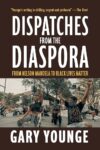
Art by Jenifer Evans (now Jasen Verefin)
This essay first appeared in the Full Stop Quarterly, Issue #7. To help us continue to pay our writers, please consider subscribing.
One of America’s most bizarre, talented and overlooked writers was born 195 years ago. His name is George Lippard. A close friend of Edgar Allan Poe and a central architect of the American Gothic novel, Lippard was a frenetic, restless, brilliant man whose life was as fascinating as his art. He’s best known for The Quaker City, a truly bizarre, complex, wonderful novel. Writer, labor agitator, socialist, reformer, supporter of the working class, journalist, would-be preacher, almost-lawyer, vagabond, editor, orator, salacious police reporter—Lippard made Poe look suburban and humdrum.
Lippard’s story is, in many respects, the narrative of Philadelphia in the early republic. It’s also a tale of economic hardship, the Panic of 1837, and compassion for your fellow citizens. He spoke out against, and fought, the injustices so prevalent in Jacksonian America, when a violent, ruthless, bumbling, incompetent man—admired for all the wrong reasons—became president and damaged the country.
Biography
Lippard was born, during April 1822, in the township of West Nantmeal, Pennsylvania. His father was a farmer and his mother was dying of tuberculosis. After a crippling injury, the father had to stop working and the family moved to Philadelphia. Two-year-old George and his sisters were left with a German-speaking grandfather and a pair of unmarried aunts.
George was educated at the Classical Academy in Rhinebeck, New York, where he was sent to study for the Methodist ministry. He quickly dropped out, however, because the school’s director was—in George’s words—“cruel.” George also had misgivings about Christianity, which was fine in theory but deeply flawed in practice. He returned to Philadelphia where, for a short time, he was homeless and penniless, squatting in abandoned buildings.
Death was stalking the young man. Between 1830 and 1843, he lost his mother, father, grandfather, two sisters and infant brother.
He began to read law in 1837, at age fifteen, but soon quit his studies, once again, for abstract and principled reasons—the law was based on reason, precedent and compromise, not human justice. His father died the same year, leaving an estate of $2,000, but George didn’t get a cent. He worked odd jobs around Philadelphia and continued living as a rootless bohemian.
The Panic of 1837, precipitated primarily by President Jackson closing the Bank of the United States and thereby destroying the economy, meant that Lippard’s prospects, and those of his fellow Americans, would not quickly improve. Unemployment was high, banks collapsed, profits and wages were down. The failure to recharter the successful, reliable and ably-run bank was only one cause of the depression. Unfettered speculation, financial corruption and European banking problems were also to blame. President Jackson put the government’s money into numerous small “pet banks” scattered throughout the nation. They were unstable, banking was deregulated, states began printing their own currency, and everyone’s money devalued. Thanks, Jackson.
What Lippard saw during the Panic—poverty, suffering, despair, corruption, ignorance—would have a profound effect on his life and work. He dedicated himself, while still a teenager, to reforming society and working for the common good.
Lippard’s first steady job was crime reporting for the Spirit of the Times. His writing was vivid, engaging and impassioned, if also sensationalistic. At twenty the Saturday Evening Post published his first story, “Philippe de Agramont,” a Gothic tale set in Medieval times. Photos and drawings of Lippard show a handsome young man with long dark hair. He has the look of a sly, confident man-about-town.
Lippard’s first novel, Lady Annabel (1844), was a light historical work admired by Poe, who became Lippard’s friend. He also began writing satirical columns for Spirit of the Times. His work was beloved by readers but controversial because of his bitter attacks on public figures. He eventually quit to work for The Citizen Soldier, a more committed newspaper, which allowed him to air his opinions, cultivate a wider audience, and become one of the city’s leading writers.
From 1842 to 1852 Lippard wrote a million words every year—essays, lectures, fiction and journalism. Much of this was dedicated to identifying, and in theory alleviating, social problems. Ironically, these jeremiads regarding economic inequality earned him quite a lot of money. He was taking home $3,000–$4,000 a year, more than double the average American salary.
In 1847, Lippard married Rose Newman. The ceremony was held outdoors, a very peculiar choice at the time. The couple stood by Philadelphia’s Wissahickon River on Mom Rinker’s Rock—which, according to legend, was used as a drop-point by spies during the Revolution. The event took place at night, under the new moon. Afterward, the couple moved into Poe’s old home. Such details are quite fitting in a Gothic writer, but perhaps bad omens for a marriage. Indeed, death continued to stalk Lippard. The couple had two children, both of whom succumbed to TB, as did his sister Harriet. Rose also died, four years after the wedding, at age twenty-six. Suicidal, Lippard tried jumping from Niagara Falls but was pulled back at the last moment.
Lippard repurposed his grief into action. He ran for public office, lost, then joined Zachary Taylor’s 1848 presidential campaign. Disillusioned, he founded the city’s first reform newspaper, the Quaker City Daily, serving as editor for two years. In 1849 he started the Brotherhood of the Union, a secret benevolent organization for young men. The Brotherhood was heavily dramatic and ritualized—a secular religion devoted to patriotism, reform and the ideals of the Founding Fathers. Lippard and the Brotherhood exposing corruption, and promoted reform, in land usage, education, elections, poverty, crime and working conditions. Within a year, nineteen states had chapters. Lippard was elected “Supreme Washington” at the Brotherhood’s first annual meeting, and for the next few years this consumed most of his time and energy. The Brotherhood endured for over one hundred years—membership swelled to thirty thousand by 1917 and disbanded in 1994.
Lippard, who’d always been sickly, suffered from tuberculosis throughout the 1850s. By the end, he was confined to his house but continued to work for the less fortunate. His final months were spent writing an article against the Fugitive Slave Law. He died, slumped over his desk, in February 1854. Lippard was thirty-one.
Fiction
During the nineteenth century you could find young men in black suits, long black hair and pale skin. They were obsessed with death, darkness, Medieval castles, torture and fear. They were melancholy and often used drugs. They weren’t Goths—they were Gothic novelists.
The genre was born when Horace Walpole published The Castle of Otranto: A Gothic Story (1764), a novel combining horror, death and romanticism. Many writers followed his lead, including Ann Radcliffe, Mary Shelley and Bram Stoker. The movement spread to Germany, France and America, where Charles Brockden Brown, America’s first professional novelist, wrote strange tales of sleepwalking, voice-throwing, rape, murder and spontaneous combustion. By mid-century, the two most prominent American Goths were Poe and Lippard.
Lippard’s work was extremely popular and profitable, though, like Stephen King and other horror writers today, he was often savaged by critics. Lippard’s work can be divided into three categories—journalism, Gothic fiction and historical romance. At the same time, however, his work can’t be divided into distinct groups because his journalism was lurid and fictionalized, his historical writing Gothic, his Gothicism sentimental, based on real events, and often intended—like his nonfiction—to instruct and improve society.
Lippard described his romances as “history in its details and delicate tints, with the bloom and dew yet fresh upon it, yet told to us, in the language of passion, of poetry, of home!” He rewrote the past so that it more accurately reflected what should have been or what would’ve been more exciting. In a short story, for example, he has George Washington rise from the tomb at Mt. Vernon and begin a pilgrimage to Valley Forge with Adonai, an immortal Roman. This is not, strictly speaking, historical fact. Lippard’s “histories” include The Nazarene (1846), Blanche of Brandywine (1846), Legends of Mexico (1847), Legends of the Revolution (1847) and ‘Bel of Prairie Eden (1848). Notice the dates—Lippard worked at a frantic pace.
His synthesis of fact and fiction—similar, in approach, to Gore Vidal and filmmaker Oliver Stone—sometimes mystified readers, who would base their understanding of history on his work. Poet-activist John Greenleaf Whittier built his “fact-based” poem “Pennsylvania Pilgrim” (1872) on fictitious information from Lippard. Even a US president was fooled, if you can believe that. In a 1957 commencement speech. Ronald Reagan quoted from Legends of the Revolution, conflating Lippard’s fantasia with the historical record. The quote concerned an unknown delegate at the Second Continental Congress whose rousing speech provoked the founders to sign the Declaration of Independence. Lippard had made it all up. In his defense the word Legends, in the title, is a truthfulness red flag. Reagan could have been more circumspect.
In terms of nonfiction, Lippard was an originator of the true crime genre. The Killers (1850) is a study of the Philadelphia race riots of 1849. Lippard reports on gang violence, racial tension, the prison system, and the city’s enclave of free African-Americans: The writing is as blood-soaked and compelling as in his fiction.
As for Lippard’s Gothic writings, the most celebrated example is The Monks of Monk Hall, serialized in ten installments (1844–45) and later republished as The Quaker City. This is his masterwork, a complex and convoluted amalgam of satire, social criticism, purple-prosed lyricism, horror, romance, erotic thriller and exposé—modifiers that describe much of his work. Quaker City—the first muckraking novel—was meant to expose the squalid conditions of slums, to reveal wrongdoing among the rich and powerful, and to indict capitalism.
The novel sold upwards of sixty thousand copies the first year and was America’s best-selling work before Uncle Tom’s Cabin. Before this, Lippard had been a relatively obscure journalist who’d published only one story and a serialized novel. Afterward, he became a member of the very class he so fiercely opposed. In fact, Lippard was decidedly capitalistic when it came time to draw up a new contract. While negotiating with G. B. Zeiber, the publisher, to print Quaker City in book form, after serialization, he demanded—and received—50 percent of the profits, which was quite rare. Lippard was also identified as “novelist” instead of “journalist” in the contract; he insisted on this detail because it gave him more prestige.
Interestingly, the witness for this contract was Henry Beck Hirst, Poe’s Philadelphia drinking buddy. This is one of many intricate links between Quaker City and local Goths. A few years later, Lippard also became full owner of the book’s copyright and, from that point on, was recognized as the book’s publisher. He also rededicated the book to Charles Brockden Brown, the city’s first Gothic novelist and a great influence on Lippard.
Even by genre standards, Lippard’s work is strange. At the time it was named “the most extravagant compound of Gothic terror, intense melodrama, and social invective ever written on this continent.” The long, circuitous, convoluted story takes place over the course of three horrific days, much of it in a crumbling mansion that serves as drug den, brothel and private gentlemen’s club. Quaker City is marked by debauchery, murder and child abuse. Characters include: Abijah Jones—“Devil Bug”—who drugs women, operates trap doors, and lugs dead bodies to the basement; the Rev. Doctor Pyne, a drunkard who despises Catholics and tries to rape his unconscious daughter; all manner of swindlers, rakes, lechers and corrupt souls. The novel features astrology, forgery, blackmail, mesmerism and human vivisection.
The story begins at night in the city center. A few libertines meet up and one asks: “Shall we elevate the—the devil along Chesnutt Street, or shall we subside quietly to our homes?” They choose oysters, drinking, suggestive conversation and, later, much more. Chesnutt was originally named Wynne Street, but William Penn renamed it in 1684. This was the center of high finance in America, before Wall Street, and home to the Bank of the United States. Chestnut Street was also a hub for the sordid underground Lippard wanted to expunge from the city.
A few pages later, Lippard foreshadows the horror to come:
Here amid paint, and glitter and gilding, amid the clink of glasses and the roar of drinking songs, occurred a scene, which trifling and insipid as it may appear to the casual observer, was but the initial letter to a long and dreary alphabet of crime, mystery and bloodshed.
With empurpled prose but great vitality, Lippard guides us toward darkness and vice. Like Dostoyevsky, Lippard’s work is a hybrid of romance and realism, plausibility and dark fantasy, melodrama and true crime, a portrait of a depraved society. America, remember, was still young and many people genuinely believed that it was a City Upon a Hill, a New Jerusalem that would provide hope and inspiration. Lippard was one of these people but, when he looked around, he saw a nation becoming as decadent as old Europe, for which it was supposed to be a correction.
Quaker City was based on the scandalous murder trial of Singleton Mercer in 1843. Mercer stood accused of killing Mahlon Hutchinson Heberton who had allegedly seduced—or possibly raped—Mercer’s teenage sister. He was found not guilty by reason of insanity, the crowd cheering enthusiastically at the verdict. The trial was held just two months after the publication of Poe’s “The Tell-Tale Heart,” which was also based on murder trials and the insanity defense.
Though Lippard’s novel is, to a certain extent, an appropriation and satiric examination of the Gothic tradition, he was deadly serious about using fiction for the public good. He writes in the preface: “That the seduction of a poor and innocent girl, is a deed altogether as criminal as deliberate murder. It is worse than the murder of the body, for it is the assassination of the soul.”
Seduction, in Quaker City, is both literal and symbolic. The novel features helpless young women preyed upon be leering maniacs and immoralists. Society is also seduced, as a whole, in that powerful, affluent men oppress and manipulate the working class. Quaker City is both titillating and reform-minded. Some praised it for revealing the social, criminal and financial misdeeds of the city’s elite, while others were repulsed by the sex, insobriety, gambling and torture. Lippard, it could be argued, both exploited and helped those in need. He wanted to do good, but he also wanted to get paid for his trouble. In the end, he did effect social change—Lippard’s writing was instrumental in the enactment of the 1849 Anti-Seduction Law.
The novel was eventually adapted into a play. Mercer bought three hundred tickets and gave them away in the street, supposedly to thuggish protestors. It had only been a few months since the last serious riot in Philadelphia, so the show was canceled. Astonishingly, the novel was also turned into a broadsheet. In 1848 Lippard launched The Quaker City, a Saturday paper dedicated to literature and current events. It was here that Lippard serialized Memoirs of a Preacher (1849), his novel about an evil, lecherous clergyman. This leads us to another Gothic connection: The fifth installment of Preacher included illustrations by Felix Octavius Carr Darley, who grew up in the former house of Charles Brockden Brown. The Philadelphia Goths, it would seem, were a small, incestuous group.
Note how contemporary this all is—a weekly paper based on a controversial play based on a lurid novel based on a media-circus trial. The only thing missing is the reality show and Oprah interview.
Death & Praxis
Lippard died at age thirty-one, the approximate number of books he published. Journalism, stories, essays, lectures—a million words a year. He was also a pioneer of organized labor, the reform movement, activist journalism, Gothic fiction and American literature. Like his contemporary Balzac, Lippard may have died young but he lived an exceedingly rich life. Somehow, nineteenth-centiry writers produced more than writers today, even without computers or editing software. They weren’t thumb-twiddling on social media all day.
Lippard was an angry guy. He spoke of his life as a “perpetual battle with hardship and difficulty . . . such as rarely is recorded in the experience of childhood or manhood.” He ranted about the “emasculated” press, idle and uninvolved, which didn’t get its hands dirty enough to address serious social problems. He also had issues with the publishing industry, which he found lackluster and mediocre, printing only “ginger-pop poets, and root-beer rhymesters.” He was melodramatic, to be sure, but also committed, sometimes arch, and always passionate. Responding to those who found Quaker City immoral, Lippard wrote:
If you discover one word in its pages, that has a tendency to develop one impure thought, I beseech you reject that word. If you discover a chapter, a page, or a line, that conflicts with the great idea of Human brotherhood, promulgated by the redeemer, I ask you with all my soul, reject that chapter, that passage, that line.
Lippard was genuinely devoted to helping the disenfranchised, but he encountered obstacles at every step. Special interests, lobbies, careerist politicians. A media preoccupied with making money and remaining inoffensive, even at the expense of honesty and human suffering. A landscape of political discourse in which fact and fiction were becoming increasingly interchangeable commodities. He would feel very much at home in the twenty-first century.
Andrew Madigan is a freelance writer based in Washington DC. He lived in Asia and Europe for fifteen years working as a professor and magazine editor. His novel, Khawla’s Wall, is published by Second Wind.
This post may contain affiliate links.







